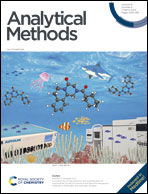Advances in electrochemical-optical dual-mode biosensors for detection of environmental pathogens
Abstract
Electrochemical techniques are commonly used to analyze and screen various environmental pathogens. When used in conjunction with other optical recognition methods, it can extend the sensing range, lower the detection limit, and offer mutual validation. Nowadays, electrochemical-optical dual-mode biosensors have ensured the accuracy of test results by integrating two signals into one, indicating their potential use in primary food safety quantitative assays and screening tests. Particularly, visible optical signals from electrochemical/colorimetric dual-mode biosensors could meet the demand for real-time screening of microbial pathogens. While electrochemical-optical dual-mode probes have been receiving increasing attention, there is limited emphasis on the design approaches for sensors intended for microbial pathogens. Here, we review the recent progress in the merging of optical and electrochemical techniques, including fluorescence, colorimetry, surface plasmon resonance (SPR), and surface enhanced Raman spectroscopy (SERS). This study particularly emphasizes the reporting of various sensing performances, including sensing principles, types, cutting-edge design approaches, and applications. Finally, some concerns and upcoming advancements in dual-mode probes are briefly outlined.

- This article is part of the themed collection: Analytical Methods Review Articles 2024


 Please wait while we load your content...
Please wait while we load your content...